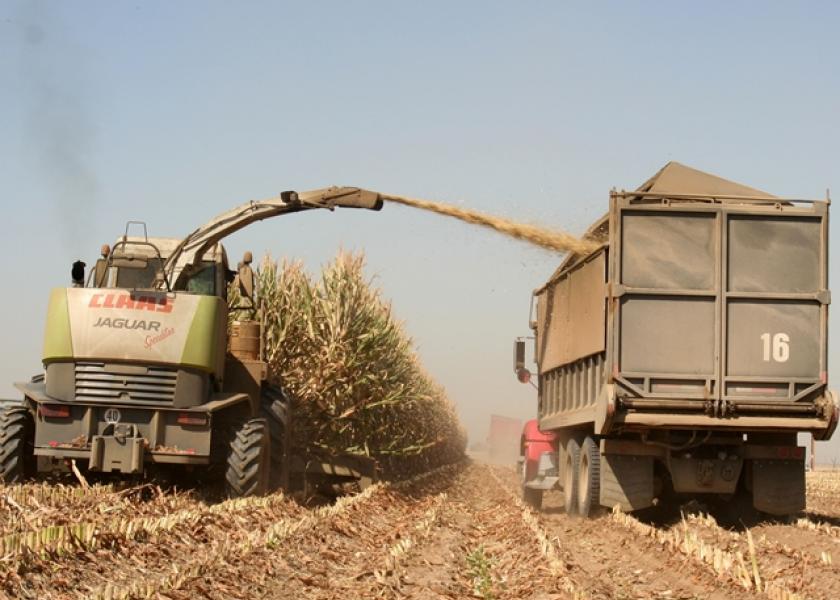Should You Treat Corn Silage with Fungicide?

Corn growers have known for years that fungus can be a yield drag on grain production, with infestations of more 10% warranting treatment.
That begs the question: Should dairy farmers chopping corn for silage be as concerned?
With one year of research completed, the second being analyzed and a third planned, University of Illinois researchers Katie Haerr and Phil Cardoso say there’s a definite possibility. Corn fields should at least be scouted for leaf fungus, and infestations above 10% probably warrant treatment.
“Fungal diseases not only cause yield loss but may also decrease feed quality for animals since it can increase the amount of fiber in feed, increase the amount of lignin as part of that fiber, and decrease the fat content of the feed,” says Cardoso.
Foliar fungicide applied to the growing crop seems to increase dry matter yield, predicted milk per ton and milk per acre production, he says. And the first of three years of research is bearing that out.
In the trial, Haerr and Cardoso compared a no-treatment control to applying fungicide once, twice or three times to the growing corn crop. Note: In 2013, when the first research was done, there was no visible fungal growth on plants.
Even so, the treated corn silage had less acid detergent fiber and neutral detergent fiber. It also had a higher percentage of rumen degradable feed. Consequently, cows produced about 12% more energy-corrected milk per pound of dry matter intake when fed the fungicide-treated corn silage.
The bottom line, income over feed cost (IOFC), also showed a positive response:
• Control cows, fed corn silage that had not been treated with a fungicide, had an IOFC of $7.31.
• Cows fed corn silage treated with one application of fungicide, at the V5 Stage, had an IOFC of $7.54.
• Cows fed corn silage treated with two applications of fungicide, at V5 and R1, had an IOFC of $8.31.
• Cows fed corn silage treated with three applications of fungicide, at V5, R1 and R3, had an IOFC of $7.83.
After just one year of completed research, Cardoso is not yet ready to make any blanket recommendations because application costs can run $30/acre. At current corn prices, you need an 8 bu/a yield response to pay for one treatment.
But he suggests farmers have their crop consultants scout fields, and consider treatment if infestations are above 10%. Other research with corn grain shows that with infestations of less than 10%, there’s a 30% chance of recovering application costs. The odds of recovering applications costs double if infestations surpass 10%.
Along with better feed and fiber digestibility, early treatment should also lower the possibility of mycotoxin contamination. “Overall, fungal contamination of feeds can lead to mycotoxin production, decreased palatability, decreased feed intake, may impair rumen microbiota and can cause negative health events in dairy cattle,” he says.







